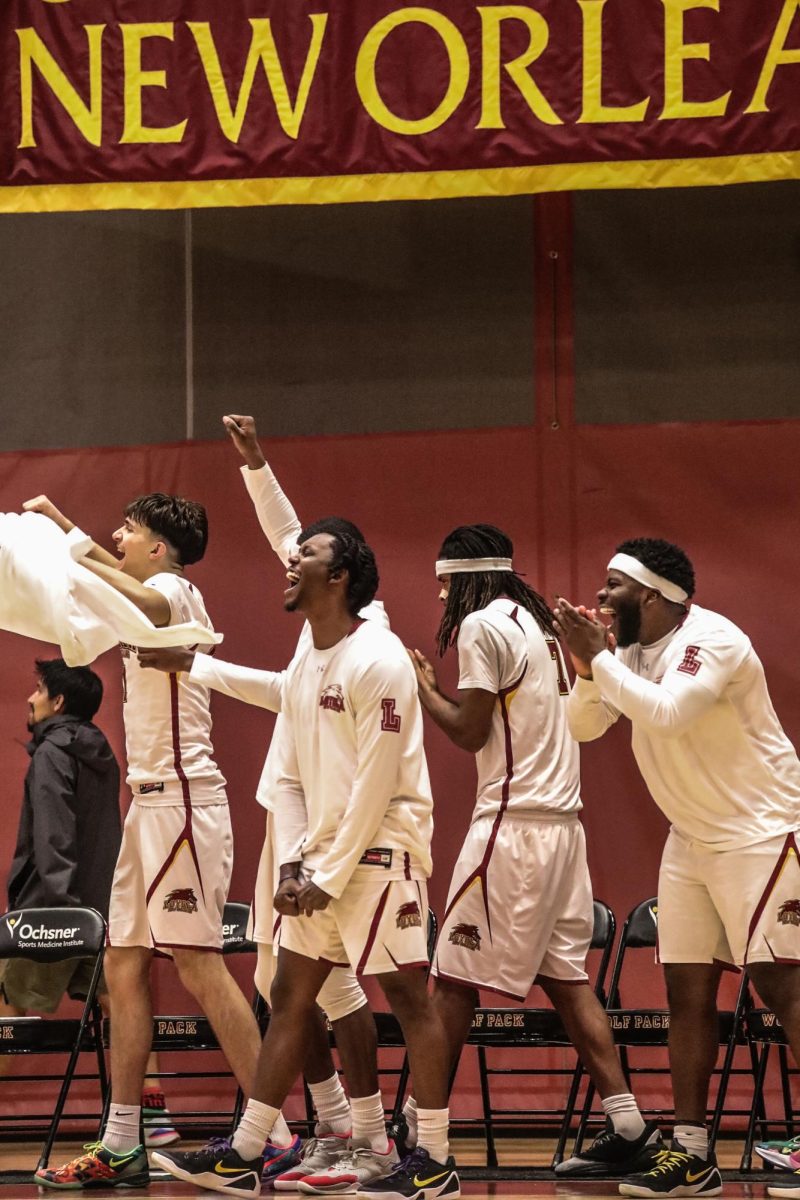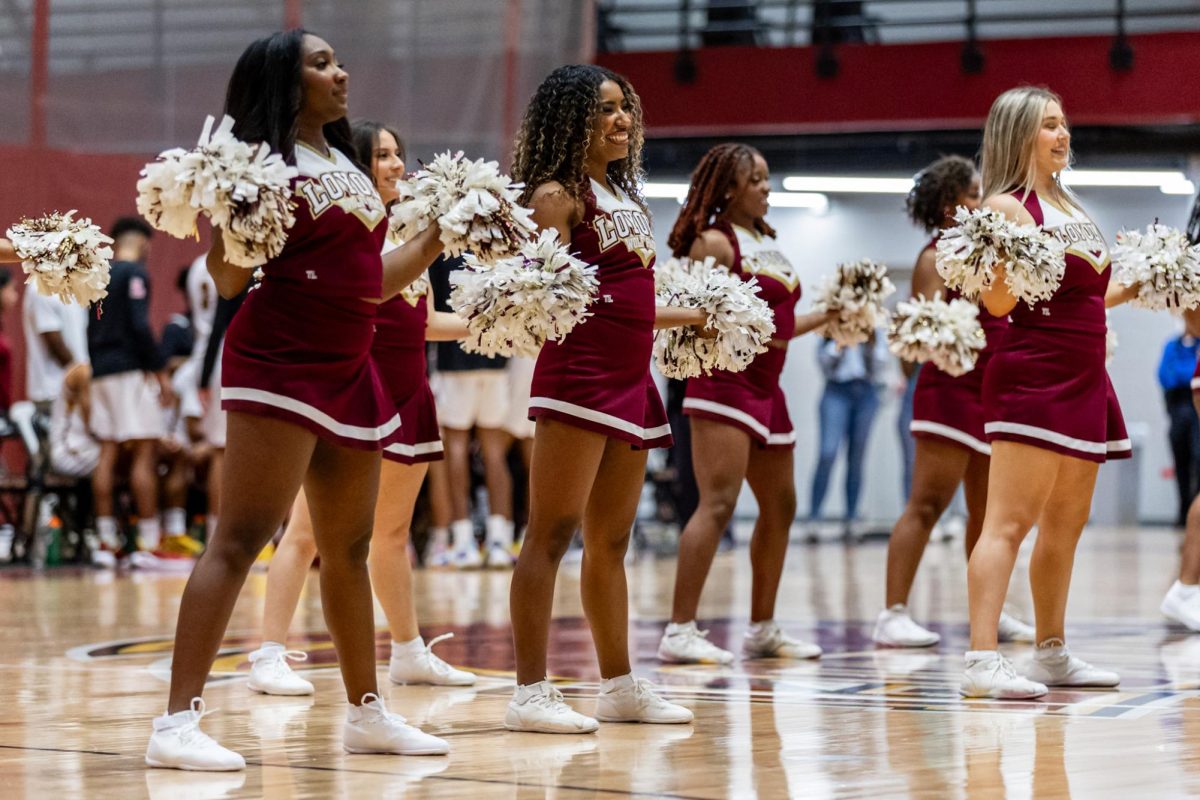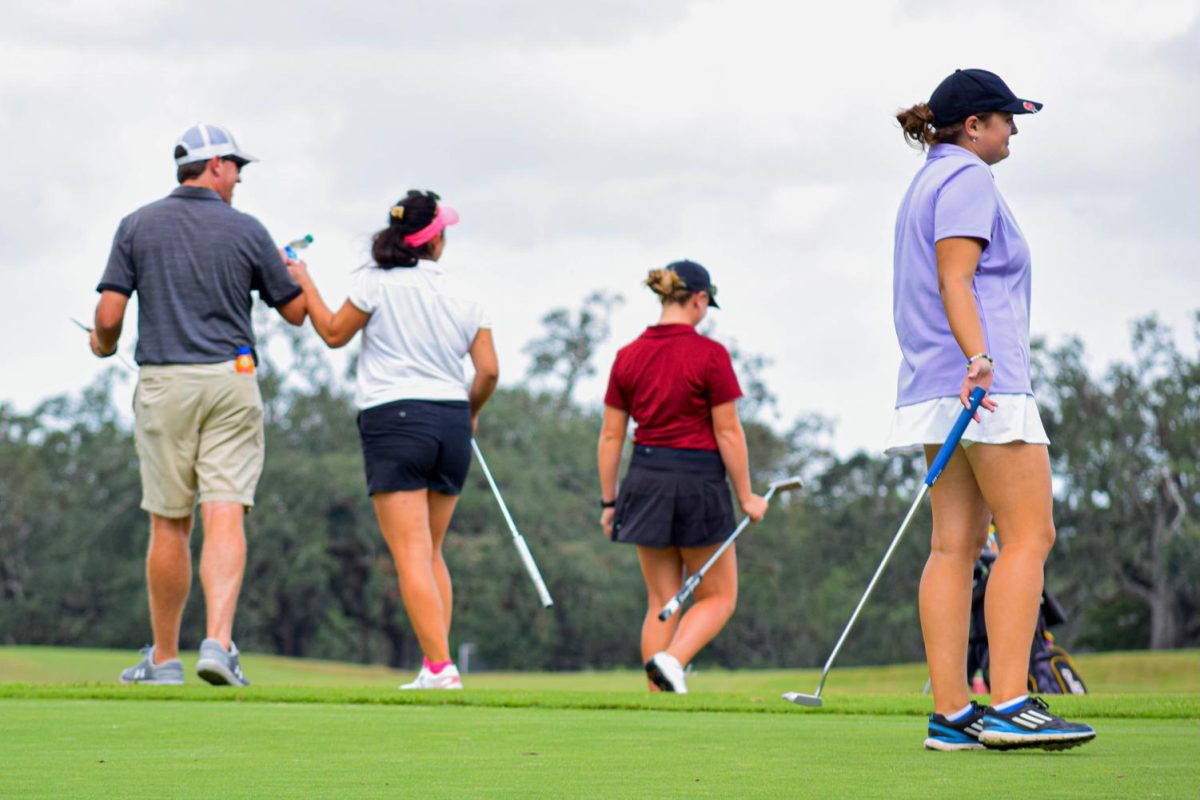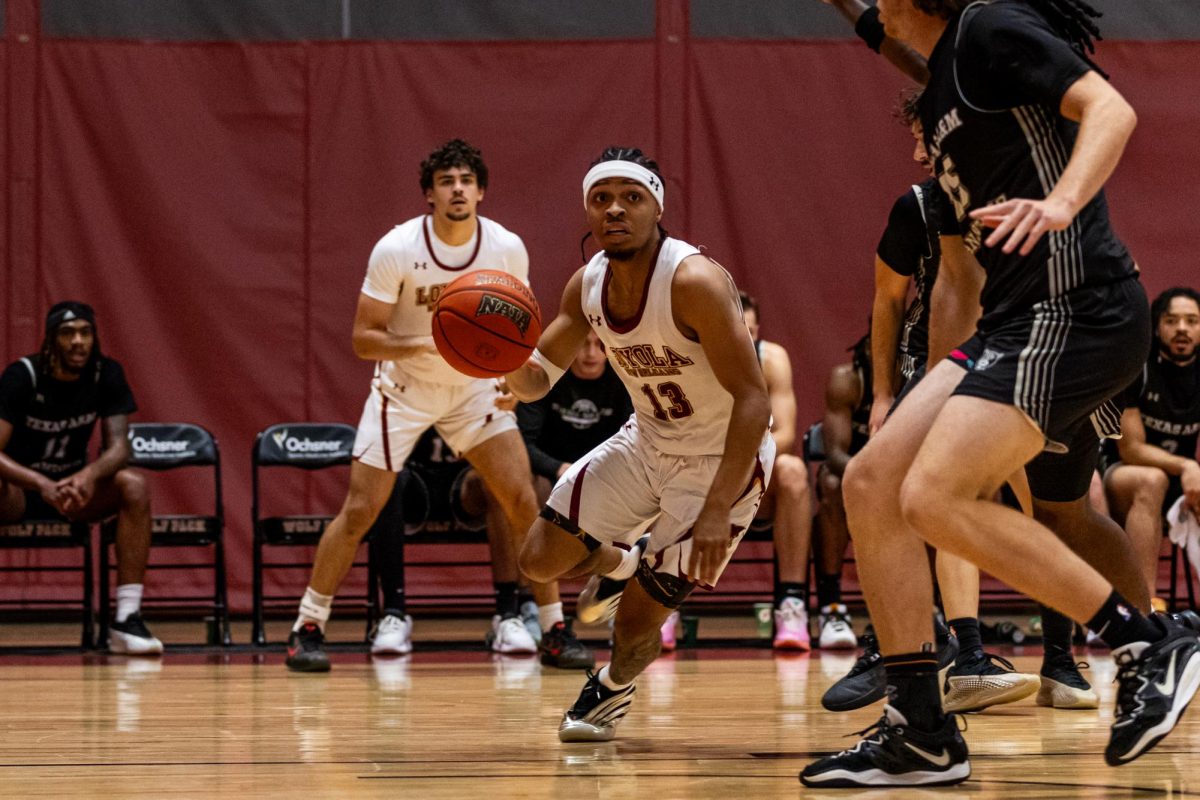Bring out the maroon and gold face paint and light up those grills because football has finally come to Loyola. Football fans on campus no longer have to huddle around the television to catch the game. Just take a trip to Harrell Park on S. Claiborne and Leonidas St. on Saturdays.
Forget hard tackles and broken legs, you’re not going to find that here. Students are leaving the helmets and pads at home and are instead battling it out in a slightly adapted version of the game called flag football.
“Even though it’s not as physical as regular football, it still requires skill to play,” said psychology sophomore Kenneth Singleton.
Flag football is identical to traditional football in every way except for the tackling. Players wear belts around their waists, and tackles are signified when a flag is ripped free from a belt.
“The fact that we cannot tackle, push or do other physical contact makes it challenging because it gives the offense a small shield of advantage,” said Singleton. “The quarterback is pressured more because his linemen are not able to use their hands to block.”
The flag football league consists of teams made up of seven to 15 Loyola students. Since all players are members of the Loyola community, the games provide a competitive outlet after class. Roommates, classmates and friends are thrown onto the field to put their athletic skills to the test.
“It’s exciting to get friends together with different personalities,” Singleton said. “It creates a unique team.”
The flag football league has been formed within the university’s intramural sports program.
Zachary Bracey, assistant director of wellness who oversees intramurals, has expressed excitement about the growth of intermural sports on campus.
“It’s open to anybody,” Bracey said. “You can create a team, join a team or you can sign up as a free agent.”
Some members of the flag football league have played football in high school, while others are playing for the first time. Still, participation is welcome to all.
“We have a wide range of athletic abilities,” Bracey said.
For some students, flag football on campus is more than just a game.
“Football is important for a community, especially in an adolescent’s life,” Singleton said. “It takes away the stress.”
Cami Thomas can be reached at cathoma2@loyno.edu







